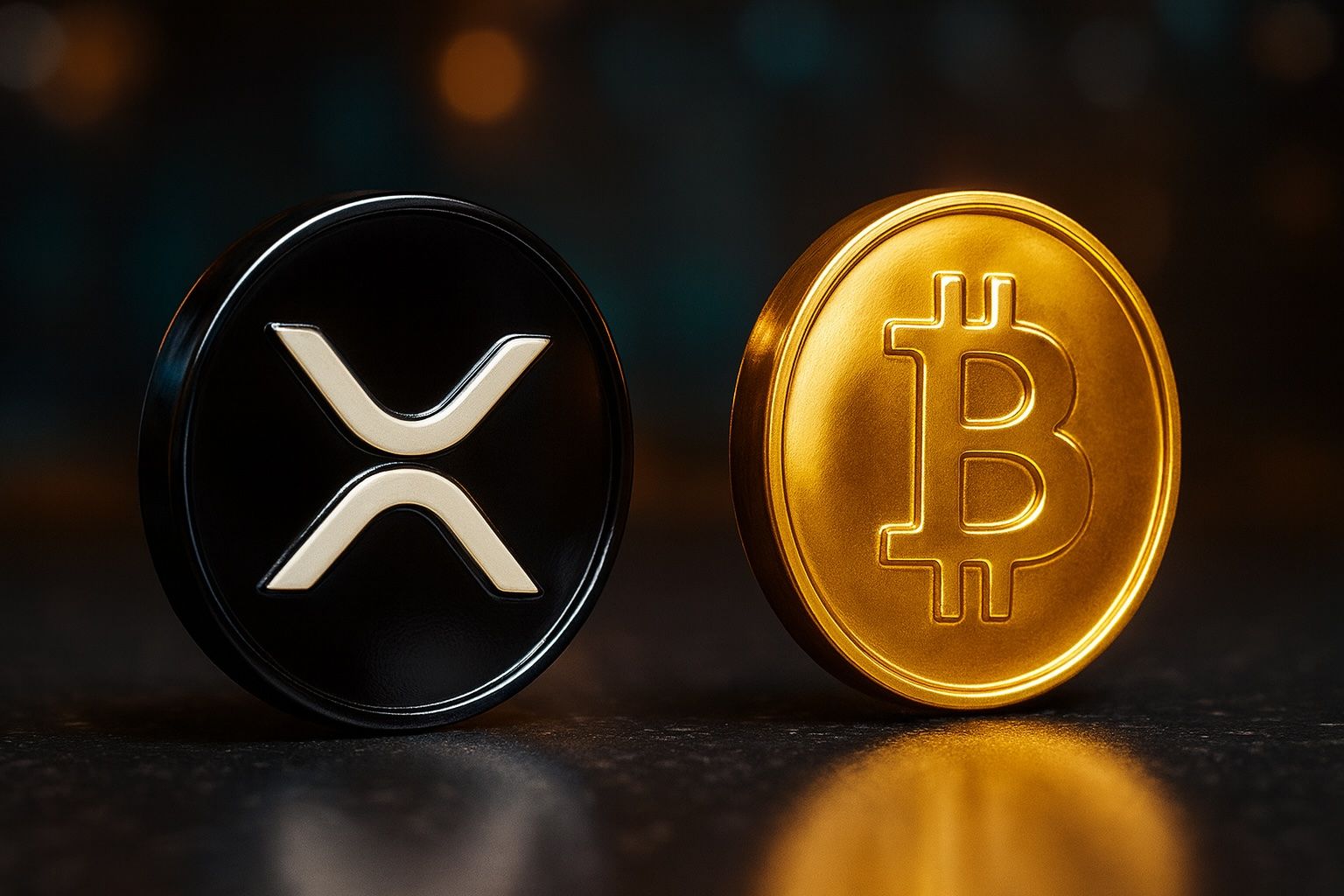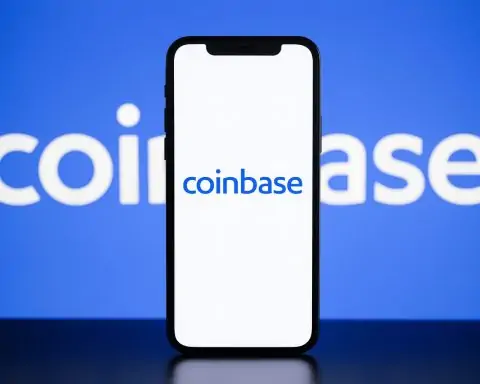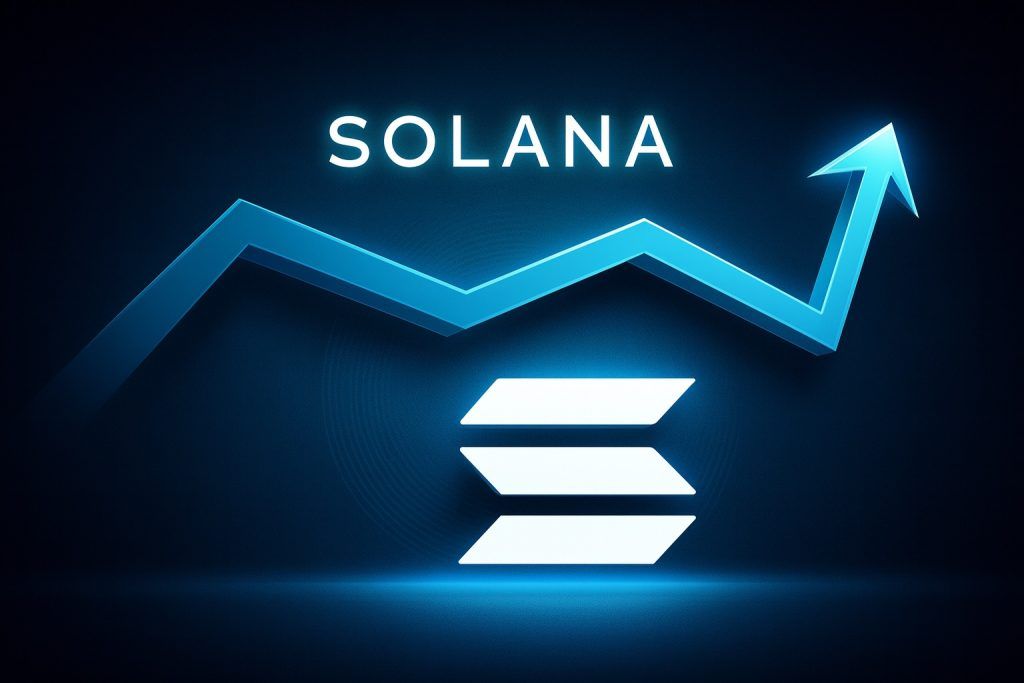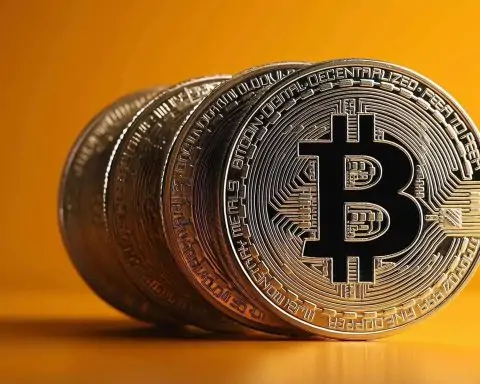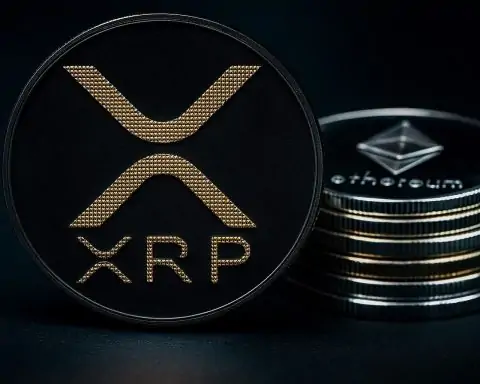- Record Rally & Crash: Bitcoin hit a fresh all-time high (~$125,000) in early October before a macro shock sent it plunging to ~$104,000. XRP likewise surged near $3.00, then endured a 42% flash crash (down to $1.64) amid market panic [1] [2]. Both have since rebounded – BTC back above $110K, XRP near $2.80 – but volatility remains front and center.
- Latest Prices (Oct 11, 2025): Bitcoin is trading around $112,000 (down slightly from last week’s peak) while XRP hovers near $2.80 after its wild swing [3] [4]. At these levels, Bitcoin’s market cap tops $2 trillion(cementing it as #1 crypto) versus XRP’s roughly $150 billion valuation (the #3 cryptocurrency behind BTC and Ether) [5] [6].
- Whales & Liquidations: XRP’s crash was exacerbated by “whale” investors dumping holdings. Over 320 million XRP (~$950M) flowed to exchanges in early October, breaking key support and triggering ~$500M in long position liquidations [7]. Bitcoin and the broader market also saw heavy leveraged unwinding – an estimated $16–$20 billion in crypto longs were wiped out in 24 hours, one of the worst liquidation events ever [8] [9].
- Safe-Haven Hype Turns to Shock: Bitcoin’s October surge (dubbed “Uptober”) was fueled by safe-haven demand as investors flocked to alternatives during a U.S. government shutdown and economic jitters [10] [11]. Gold and BTC rallied in tandem, bolstering Bitcoin’s “digital gold” narrative. But on Oct. 10, a surprise 100% tariff announcement re-igniting the U.S.–China trade war sparked a sharp market-wide crash, dragging Bitcoin down ~10% in hours and XRP and other altcoins down 20–40% [12] [13].
- Regulatory Breakthroughs Boost Both: A more crypto-friendly regulatory climate has underpinned these assets. In 2024, the first U.S. spot Bitcoin ETFs were approved after years of effort, unleashing billions in institutional investment into BTC [14] [15]. XRP, meanwhile, scored a legal victory – a landmark court ruling and August 2025 settlement affirmed XRP is not a security, ending the SEC lawsuit clouding Ripple [16]. U.S. exchanges promptly relisted XRP, and major asset managers filed six proposals for the first spot XRP ETFs, with SEC decisions expected by late October [17] [18].
- Adoption Trends Diverge: Institutions view Bitcoin as “digital gold” and a treasury asset – e.g. MicroStrategy holds 638,000+ BTC (over 3% of the total supply) as a reserve [19]. Bitcoin’s network is more robust than ever (hash rate hit record highs), and even some central banks are indirectly accumulating BTC as a hedge. XRP’s adoption is driven by payment utility: Ripple’s On-Demand Liquidity system uses XRP for cross-border transfers, with the XRP Ledger now handling 2+ million transactions per day [20]. Banks like Santander and SBI are piloting XRP for remittances, and institutions bought over $1.1B of XRP in 2025 specifically to use in Ripple’s network – reflecting real demand beyond speculation [21].
- Bullish Forecasts & Risks: Despite recent turbulence, many analysts remain optimistic. Some predict Bitcoin will climb to $130K–$160K by late 2025, with even ~$200K possible in 2026 if current trends persist [22]. XRP forecasts range from a conservative ~$3 by end-2025 to a $5+ scenario if an ETF is approved and institutional money pours in [23]. Technical charts highlight crucial levels: Bitcoin needs to break back above ~$124K to resume its uptrend [24], while XRP faces stiff resistance around ~$3.30 (its late-August high) [25]. Failure to hold support – roughly $105K for BTC or $2.70 for XRP – could signal further downside (veteran trader Peter Brandt warns XRP could revisit ~$2.20 if its $2.6–$2.8 support “floor” gives way) [26] [27].
Bitcoin and XRP at a Glance – October 2025
Both Bitcoin (BTC) and XRP have seen impressive gains in 2025, but also extreme volatility in recent days. Year-to-date, Bitcoin is up roughly 30% and recently shattered its 2021 record high, while XRP is up about 35–40% and reached levels not seen since its 2018 peak [28] [29]. In fact, XRP’s price in October 2025 is over 440% higher than this time last year (around $0.50 in Oct 2024) [30] – a testament to how far it has rallied following Ripple’s legal wins.
As of October 11, 2025, Bitcoin trades around $110K–$115K per coin and XRP around $2.80, after both partially recovered from a sharp dip [31] [32]. At these prices, Bitcoin remains the largest cryptocurrency with a market capitalization north of $2 trillion, whereas XRP’s market cap of ~$150 billion firmly ranks it #3 in the crypto world (behind only Bitcoin and Ethereum) [33] [34]. This means Bitcoin alone now accounts for over 50% of the entire crypto market’s value, highlighting its dominant status, while XRP constitutes roughly 3–4% of the total market – substantial for an altcoin, bolstered by its expanding use case.
Market sentiment has been on a roller coaster alongside prices. Earlier in the month, optimism was high – the Crypto Fear & Greed Index even sat in “greed” territory as Bitcoin raced to new highs. But after the recent shake-up, sentiment has cooled to neutral [35]. On October 11, the index had fallen back to around 54 (neutral) from well above 60 a week prior, reflecting that traders are more cautious now, though not in outright fear. In other words, confidence in crypto’s uptrend is still intact but shaken, as investors digest the latest turbulence.
From a technical perspective, both coins are at pivotal junctures. Bitcoin’s surge in early October took it right to a major resistance around ~$124,000 – the area of its prior peak [36]. Breaking above that level would mark a decisive new all-time high and could open the floodgates for further gains, whereas failing to conquer it led to a pullback (as we just saw). For XRP, the key ceiling is around $3.30–$3.70, the zone of its August highs [37]. Bulls will need to push XRP beyond that to signal a true continuation of its rally. On the downside, analysts identify roughly $118K and $110K as near-term support floors for Bitcoin (with stronger support around ~$105K, the recent crash low) [38]. XRP’s critical support is in the $2.75–$2.80 range – a level that has held through late September and again during the latest sell-off [39]. A sustained break below ~$2.7 would be a warning sign of weakening momentum for XRP, whereas holding above that keeps the bullish structure intact.
In summary, as mid-October begins, Bitcoin remains far above its bear-market lows and is consolidating in the low $110Ks, and XRP – despite the drama – is still dramatically higher than a year ago, stabilizing in the high $2 range. Both are benefitting from improved fundamentals and investor interest, but they’re also navigating a minefield of macroeconomic and technical challenges that make the next moves anything but certain.
Uptober’s Highs and Lows: From Rally to Flash Crash
October 2025 has been a tale of two halves for Bitcoin and XRP – exuberant gains at the start of the month followed by a sudden gut-wrenching drop. Understanding this whipsaw price action provides context for where things stand now.
Bitcoin’s “Uptober” Surge to Record Highs
Bitcoin entered October riding a strong upward wave. After spending much of September in a holding pattern around $110K, the crypto heavyweight broke out as Q4 began [40]. By October 3–5, BTC rocketed past its previous peak, hitting $123K and then $125K – its highest price ever [41]. This rally was so powerful that it added roughly +12–15% to Bitcoin in just five days, making it one of the strongest early-October performances on record [42]. The move validated the bullish “Uptober” moniker traders often use for October. It also expanded Bitcoin’s market cap to an eye-popping $2.4 trillion at one point (greater than the GDP of most countries) [43], underlining how much value was created in days.
What drove this surge? A few key catalysts. First, safe-haven demand kicked into high gear. In an interesting twist, the U.S. federal government entered a partial shutdown on Oct. 1, and this uncertainty had investors seeking stable stores of value [44]. Just as gold spiked to record highs (~$4,000/oz), Bitcoin too caught a bid as “digital gold,” benefiting from a flight-to-safety narrative [45] [46]. Analysts noted Bitcoin’s rising correlation with gold – and indeed, both were rallying together amid fears of economic instability and currency debasement. A weaker U.S. dollar (down ~12% in 2025) and cooling inflation also helped push capital toward assets like BTC that are seen as hedges [47] [48].
Secondly, institutional flows poured in. The recent launch of several spot Bitcoin ETFs in the U.S. (including funds by BlackRock and others) has opened the floodgates for Wall Street money. In just the first week of October, over $3.2 billion flowed into Bitcoin funds, a sign that big investors were eagerly adding crypto exposure [49]. One analysis noted that about 3% of all BTC’s supply was snapped up by institutions in 2024 alone [50], and that trend continues. During the early October rally, BlackRock’s ETF reportedly saw massive new inflows, contributing to the buying pressure driving BTC upward. This was critical, as it suggests the price surge was fueled by fresh capital and “real” demand, not just retail speculation.
By October 5, Bitcoin touched ~$125,000 – a new all-time high [51]. At that level, BTC had climbed roughly 30% year-to-date (still trailing gold’s ~50% YTD rise, interestingly) [52]. Importantly, market observers noted the rally’s healthy underpinnings: strong fundamentals, high trading volumes (spot + derivatives trading hit 2025 highs during the run-up) [53], and no signs of the blow-off top euphoria that marked previous peaks. “This surge was built on solid fundamentals, not hype,” as one analyst put it [54]. Indeed, momentum indicators like the RSI hadn’t even hit extreme overbought levels yet, suggesting the rally had room to run [55]. Bitcoin seemed to be consolidating just under $125K, “catching its breath” after the rapid climb – often a positive sign that new buyers were stepping in to support prices rather than an immediate reversal [56].
The Tariff Bombshell and Market-Wide Plunge
The bullish party, however, came to an abrupt end in the second week of October. On October 10, 2025, a bolt from the blue struck global markets: U.S.–China trade tensions flared dramatically, triggering an abrupt risk-off move virtually everywhere. That morning, U.S. President Donald Trump unexpectedly announced – via social media – plans for a “massive increase” in tariffs on Chinese goods, complaining that China was becoming hostile on trade [57]. This bombshell escalated by late afternoon when Trump confirmed a new 100% tariff on all goods from China starting Nov. 1 [58]. In essence, the trade war was back on, in a big way.
The reaction was immediate chaos. Stock markets, which had been hitting highs days before, went into freefall on Oct. 10. The Nasdaq plunged 3.6% in one day, the S&P 500 dropped ~2.7% – their worst day in months [59]. Investors dumped risk assets and rushed to safe havens: gold spiked back above $4,030 (+1.5%), and U.S. Treasury yields fell as bonds were snapped up [60] [61].
Initially, some thought Bitcoin might behave like a safe haven too – after all, it had been rising with gold during the shutdown. But in this acute panic, crypto traded more like a tech stock than digital gold. When Trump’s tariff tweets hit, Bitcoin plunged in tandem with equities [62]. It fell from about $122K in the morning to under $119K within minutes [63]. As the full scope of the tariff plan became clear that evening, BTC kept sliding – by late Oct. 10 it traded around $114,000, down roughly 8–10% from the day’s high [64]. In percentage terms, Bitcoin went from being +3% up on the day to about –5%, a swift turnaround. This divergence from gold (which was up on the news while BTC fell) underscored that in moments of extreme stress, many still view crypto as a risk-on asset. “Gold once again showed itself, not bitcoin, to be the risk-off asset of choice,” CoinDesk noted of that day [65].
For XRP and other altcoins, the pain was even more severe. As a lower-liquidity asset, XRP tends to amplify Bitcoin’s moves – and that dynamic played out viciously on Oct. 10. Once Bitcoin started tanking, altcoins crashed harder. XRP, which had been trading around $2.80 earlier, went into a freefall. Within hours that afternoon and into early Oct. 11, XRP collapsed by over 40%, dropping to a low of about $1.64 [66]. This kind of flash crash was XRP’s worst one-day drop in recent memory, wiping out weeks of gains in a blink. Other majors weren’t spared: Ethereum plunged ~25% from ~$4,400 to $3,400, and Solana and others saw 20–30% dives [67]. Even highly liquid markets like Bitcoin broke down further overnight – NewsBTC reported BTC hit a nadir around $104,000 during the frenzy, erasing essentially all its early October gains [68] [69].
This cascading sell-off was exacerbated by the structure of the crypto market. A wave of long-leveraged positions started getting liquidated as prices fell. Margin calls begot more selling, which begot more liquidations in a vicious cycle. By the time the dust settled, an estimated $16–$20 billion worth of crypto long positions were force-closed across exchanges [70] [71]. According to CoinGlass data, this 24-hour wipeout was larger in dollar terms than even the worst days of the March 2020 COVID crash or the FTX collapse in 2022 [72] [73] – partly because crypto market values are much higher now, so a 15% drop today cuts more nominal wealth than a 50% drop did back then.
For XRP, a combination of factors made the plunge especially dramatic. On-chain data showed that in the days prior, large XRP holders (whales) had been moving tens of millions of tokens onto exchanges, presumably to sell [74]. One whale alone offloaded 160 million XRP (~$480M) earlier in the week, and whales collectively sent over 320 million XRP to exchanges – creating immense extra supply in the market [75]. This steady overhead pressure had already pushed XRP below the $3.00 mark even before the tariff news. So when panic hit on Oct. 10, XRP was primed for a “forced deleveraging” event [76]. As the price fell through $2.80, a cascade of stop-loss orders and margin calls triggered approximately $500 million in XRP long positions to liquidate [77]. Liquidity vanished and the price briefly nosedived to $1.64, likely an overreaction in thin order books. Exchange volumes for XRP exploded to 164% above normal during the chaos [78], highlighting just how frantic the selling became. In effect, XRP’s drop was magnified by its own whales and traders, on top of the macro shock.
Stabilization and Rebound
By midday October 11, the immediate fire-sale appeared to be over. Crypto markets found a footing overnight as algorithmic liquidations subsided. Bitcoin bounced from its $104K low back up to the $110K–$115K range [79]. That’s still about 8–12% below its high, but a solid recovery from the extreme lows. XRP also clawed back a chunk of its losses – rising from $1.64 to around $2.35 by the next morning [80]. Though that was well under pre-crash levels, it meant XRP regained roughly half of the plunge. Other altcoins similarly saw relief bounces (for example, Dogecoin doubled off its lows, from ~$0.11 to ~$0.18) [81].
Trading sentiment shifted from panic to cautious optimism. Analysts noted that the worst of the liquidation cascade was likely past, allowing prices to normalize somewhat. Over the weekend of Oct. 11–12, liquidity was thinner than weekdays, so the market moved a bit slower – but this also prevented another big swing, giving traders time to reassess [82]. Notably, long-term crypto holders appeared unfazed by the drama. On-chain metrics indicated that “HODLers” did not panic sell; in fact, some large investors took the opportunity to accumulate on the dip [83]. For instance, data showed certain whale addresses adding XRP when it fell below ~$2.40 [84]. This kind of bottom-fishing by believers provided a backstop and is a positive sign that core demand remains.
By the end of that volatile week, both BTC and XRP were off their peaks but steadying. Bitcoin hovered just above the key psychological $110K level, and XRP oscillated in the high-$2 range. The rapid stabilization suggests that, unlike past crypto crashes, this one was driven largely by short-term traders and leverage rather than a fundamental loss of confidence in the assets. “The free-fall was short-lived, but the mood is more cautious now,” observed one market report [85]. Indeed, the market’s Fear & Greed Index landing in neutral tells us that while euphoria is gone, widespread fear hasn’t set in either [86]. Many see the event as a necessary shake-out of excess leverage – painful in the moment, but potentially healthy for the continuation of the bull run.
Recent News and Drivers Shaping Prices
The dramatic price moves of the past few days did not happen in a vacuum. A confluence of recent news and macro developments have been influencing Bitcoin and XRP, alternately fueling rallies and causing pullbacks. Here we break down the key factors from the last week that impacted each coin:
- U.S. Government Shutdown (Boosting BTC): A major news event was the U.S. federal government shutdown that began on October 1, 2025. This created uncertainty in traditional markets and sparked talk of safe-haven assets. Bitcoin, often compared to gold, got a notable bid as a “shutdown shock absorber” – investors moved into BTC as insurance against Washington’s fiscal gridlock [87]. Mainstream media even highlighted how Bitcoin investment funds saw a sudden $430 million inflow on Sept. 30 (the day before the shutdown), reversing weeks of outflows [88] [89]. Analysts at Standard Chartered pointed to the shutdown as a significant catalyst for Bitcoin’s strength, arguing this episode had a bigger impact on BTC’s price than previous government shutdowns [90] [91]. The narrative was that as the U.S. government stumbled, decentralized alternatives like Bitcoin shone. This sentiment contributed to Bitcoin’s early October climb. (Notably, the shutdown was resolved relatively quickly in mid-October, avoiding protracted damage – but the initial fear was enough to spur a crypto bid.)
- ETF “Frenzy” and Institutional Uptake: Both Bitcoin and XRP are riding waves of institutional adoption news. For Bitcoin, the story has been the long-awaited arrival of spot Bitcoin ETFs in the U.S. After a decade of denial, regulators finally approved multiple Bitcoin-backed exchange-traded funds in late 2024 and early 2025 [92]. This is a game-changer: it offers traditional investors an easy, regulated way to get Bitcoin exposure. By October 2025, these new ETFs have already accumulated over $62 billion in assets [93] – a huge inflow of capital. In fact, during the volatile week of the crash, two U.S. Bitcoin ETFs still saw net inflows of $255 million combined, indicating that some big players were buying the dip via ETFs [94]. Such steady institutional interest has been propping up Bitcoin’s price even on down days.XRP, meanwhile, is on the cusp of its own ETF moment. In the wake of Ripple’s courtroom victory against the SEC, at least six spot XRP ETF applications have been filed by major asset managers (names like Grayscale, WisdomTree, Franklin Templeton) [95]. The SEC is expected to rule on these by late October. There’s a lot of optimism here – Bloomberg analysts famously put the odds of approval near 100% for at least one XRP fund [96]. Traders speculate that if even one gets approved, it could “open the floodgates” of new investment into XRP [97], similar to what happened with Bitcoin. This anticipation contributed to XRP’s strong performance through 2025 and even cushioned it after the crash. (During the SEC’s review, there was a brief scare with the U.S. government shutdown potentially delaying decisions, but since the government reopened, timelines should hold [98].) In short, ETF fever – existing for BTC, imminent for XRP – is a key narrative driving both assets.
- Ripple vs. SEC Legal Resolution: Perhaps the single most important recent development for XRP was the resolution of its multi-year legal battle. In August 2025, Ripple Labs settled with the SEC, agreeing to pay a $125 million fine, and crucially, regulators conceded that XRP is not a security in secondary market sales [99]. This outcome removed a dark cloud that had hung over XRP since late 2020. Almost immediately, major U.S. crypto exchanges (Coinbase, etc.) relisted XRP for trading [100], unlocking access for American investors that had been barred for years. The price of XRP soared on this legal clarity – back in mid-2023 when a court first hinted at XRP not being a security, XRP had a huge rally, and the final settlement in 2025 further cemented confidence [101]. “XRP’s price soared after Ripple survived a lengthy SEC lawsuit,” one analysis noted, highlighting how pivotal this win was [102]. The end of the lawsuit also spurred Ripple and others to move forward on business plans that were on hold (like the ETF filings, and Ripple applying for a U.S. banking license) [103]. Overall, this regulatory cloud lifting has fundamentally improved XRP’s prospects and is a key reason it’s the third-largest crypto today.
- Trade War & Tariffs (Macro Headwinds): On the flip side, macroeconomic and geopolitical news has injected volatility. The escalating U.S.–China trade war in October is enemy #1 for risk assets right now. President Trump’s tariff announcement on Oct. 10 was a prime example of an exogenous shock that can hit crypto hard [104]. Such events remind investors that Bitcoin and XRP don’t trade in isolation; they’re part of the broader financial ecosystem. When global risk appetite nosedives – as it did on the tariff news – even strong cryptos can see knee-jerk sell-offs as investors raise cash. Interestingly, prior to that, Bitcoin was somewhat benefiting from geopolitical concerns (like earlier in 2025, conflicts in Eastern Europe and the Middle East had some investors hedging with crypto). But the tariff situation flipped the script, causing a correlation spike between crypto and equities (risk assets down) and an inverse correlation with safe havens like gold (which went up) [105] [106]. Moving forward, how the trade conflict unfolds will be closely watched: if tensions worsen or retaliation comes from China, we could see more risk-off moves that temporarily drag Bitcoin and XRP lower, despite their positive long-term trends.
- Federal Reserve and Interest Rates: Another news theme is the shifting outlook on U.S. monetary policy. After aggressive interest rate hikes in 2022–2024, the Federal Reserve has signaled a possible pivot. In late October 2025, the Fed has a meeting where many now expect the first rate cut in years, or at least a strong hint of one [107]. This expectation has already influenced crypto – Bitcoin’s implied volatility spiked as traders positioned for a potentially big move after the Fed decision [108]. If the Fed indeed eases monetary policy (cutting rates due to economic softening or to counteract trade-war risks), it could be a bullish catalyst for both BTC and XRP. Lower rates generally weaken the dollar and boost appetite for higher-risk, high-reward assets like crypto [109]. We saw this dynamic in play in 2020–2021 when easy money helped fuel a crypto bull market. Now the narrative is that 2025 might see the end of tightening and start of easing, which “historically benefits cryptocurrencies,” as analysts note [110]. Crypto bulls are eagerly watching inflation and jobs data – anything that supports a Fed pivot tends to support crypto prices.
- Notable Corporate and Political Endorsements: Beyond the headlines, there have been interesting tidbits such as Donald Trump meeting Ripple’s CEO recently and musing about “upgrading the ancient financial system” with crypto [111]. This unexpected nod from a former (and possibly future) U.S. President gave the XRP community a morale boost and speculation that U.S. policy might tilt even more crypto-friendly in the future. Additionally, traditional finance giants continue to dip their toes into crypto. For instance, news broke that Morgan Stanley opened up Bitcoin and crypto access to all its wealth management clients (expanding from a limited pilot) [112]. And the parent company of the NYSE (ICE) made a big investment in a crypto prediction market platform (Polymarket) – a $2 billion deal that underscores Wall Street’s growing interest in crypto infrastructure [113]. Each of these news items by themselves didn’t move prices much, but collectively they show a steady drumbeat of adoption and acceptance for crypto assets in realms that were previously skeptical. Over time, this improves market sentiment and fundamentals.
In summary, the past few days’ news cycle has been incredibly eventful: a mix of macro shocks that spooked markets, and crypto-specific victories that strengthen Bitcoin’s and XRP’s long-term case. The interplay of these forces – positive regulatory/adoption momentum versus negative macro surprises – largely explains why we saw both record highs and a flash crash in the span of a week. Traders now have to weigh these cross-currents in gauging the road ahead.
Adoption, Utility, and Market Outlook for BTC vs XRP
Stepping back from the day-to-day volatility, Bitcoin and XRP represent two very different value propositions in the crypto ecosystem. Understanding their adoption and use cases helps inform their future potential and why investors are excited about each.
Bitcoin’s Role: Digital Gold & Institutional Asset – Bitcoin has solidified its status as a store of value and an investment asset class in its own right. Often called “digital gold,” BTC is increasingly held as a hedge against inflation, currency debasement, and systemic risks. In 2025, we’ve seen validation of this narrative: global central banks collectively bought near-record levels of gold, but many forward-thinking investors also see Bitcoin as part of that safe-haven trade [114] [115]. Large institutions and corporations are now deeply involved. MicroStrategy (a business intelligence firm-turned-Bitcoin proxy) famously holds over 638,000 BTC on its balance sheet – more than 3% of the total supply – as a long-term reserve [116]. Other companies and funds have followed suit, adding Bitcoin to treasury reserves. Major asset managers like BlackRock, Fidelity, and Invesco are not just offering ETFs; some are also directly or indirectly accumulating BTC for clients.
On the network side, Bitcoin’s fundamentals look strong. The mining hash rate (a measure of the network’s security and activity) hit all-time highs in 2025, reaching levels around 1 zetahash per second (that’s 1,000 exahashes/sec) [117]. This unprecedented hash power signals robust miner confidence and investment in infrastructure. It also means Bitcoin’s network is more secure against attacks than ever. Additionally, Bitcoin’s inflation rate (new supply from mining) keeps declining due to its programmed halving events – making it scarcer over time. All these factors contribute to the view that Bitcoin is a long-term asset you buy and hold. Its primary “use case” isn’t transacting in daily commerce (given slow throughput and fees), but rather wealth preservation and appreciation. People often buy BTC expecting it could be significantly more valuable in the future if adoption continues (a self-fulfilling prophecy to an extent).
XRP’s Role: Payments Token & Banking Utility – XRP, by contrast, is chiefly focused on being a fast, efficient bridge currency for payments. Ripple, the company associated with XRP, has been forging partnerships with banks, fintechs, and payment providers to use XRP for cross-border money transfers. The flagship solution, On-Demand Liquidity (ODL), allows financial institutions to swap fiat to XRP and send it to a receiving institution, which converts it to local fiat – all in seconds. This can eliminate the need for pre-funded nostro/vostro accounts and make international payments much faster and cheaper. In 2025, ODL has gained solid traction: Ripple reports that the XRP Ledger is processing over 2 million transactions per day, ranking it among the most active blockchains [118]. Banks like Santander, SBI Remit, and payment firms like MercuryFX have piloted using XRP for remittances, often citing dramatic improvements in speed and cost [119].
Crucially, now that the SEC saga is over, U.S. institutions that were previously wary can more freely explore XRP. Ripple noted that in 2025 alone, over $1.1 billion of XRP was purchased by institutions specifically for use in payment flows [120]. That indicates genuine demand for XRP’s utility, not just trading. When a bank uses XRP as a bridge, it needs to hold (even if briefly) large amounts of XRP to facilitate transfers – this creates a constant underlying demand for liquidity. In theory, as more banks join RippleNet/ODL, the demand for XRP liquidity grows, providing fundamental support to XRP’s price. Unlike some altcoins that rely purely on speculation, XRP is increasingly tied to a real-world business model: the global remittance and payments market (a multi-trillion-dollar space). That said, XRP’s success is not guaranteed – it competes with other emerging payment networks, and adoption, while promising, is still in early stages. But the direction is positive: from central bank digital currency experiments to Ripple pushing for a bank charter (as mentioned, Ripple applied for a U.S. banking license, with feedback expected by end of October) [121], all signs point to deeper integration of XRP into traditional finance.
MarketDynamics & Community: Bitcoin’s community and investors tend to be long-term “HODLers,” and data confirms that a large portion of BTC supply hasn’t moved in many months, even years. These steadfast holders help stabilize Bitcoin – they often buy dips and are reluctant to sell on FUD (fear, uncertainty, doubt). XRP’s community is also very passionate (“XRP Army”), and they have shown strong conviction through the long legal battle. However, XRP historically has had a more skewed ownership (with Ripple holding a significant amount in escrow, though they release it in controlled sales). Large XRP whales can influence the market more readily, as we saw with the recent whale-driven sell-offs. This means XRP can have episodes of higher volatility, especially if a few big holders act in concert. The flip side is that if those whales accumulate, it can likewise boost the price. Transparency into on-chain movements has improved, so traders keep a close eye on whale wallet activity as a barometer for XRP’s near-term direction.
Market Sentiment and “Dominance”: Bitcoin currently accounts for just over 50% of total crypto market cap [122], a metric known as Bitcoin Dominance. When BTC dominance rises, it often means Bitcoin is outperforming altcoins as investors rotate into the relatively “safer” big asset. Indeed, during the early October rally, Bitcoin’s dominance jumped, suggesting it was leading the market higher. XRP’s share is smaller, but notably, XRP reclaimed the #3 market cap spot in 2025, overtaking stablecoins and others [123]. This was a big morale boost for XRP proponents, as it hadn’t been #3 since its heyday in 2017–2018. It signals that mainstream crypto investors once again view XRP as one of the core assets, especially now that its legal ambiguity is gone. Going forward, if Bitcoin continues to surge, it could draw capital away from altcoins short-term (the typical pattern is BTC rallies first, then profits flow into altcoins like XRP in later stages of a bull run). Conversely, any major XRP-specific catalyst (like an ETF approval or partnership announcement) could see XRP outperform and dominance shift a bit back.
Broader Crypto Trends: The entire crypto market surpassed $4 trillion in market cap during the “Uptober” rally [124], an all-time high for the combined value of cryptocurrencies. This rising tide lifted both BTC and XRP. While Bitcoin led, many altcoins had remarkable runs (XRP among them). The macro environment – hints of easier monetary policy, high liquidity, tech boom in equities – created a favorable backdrop for crypto in 2024–2025 [125]. Now, with the recent correction, some froth has been blown off. The question is whether the market is entering a consolidation phase (to digest gains and set up for another leg higher) or if this marks the start of a deeper downtrend. Most signals suggest consolidation: we aren’t seeing an exodus of users or developers, and core adoption metrics for both Bitcoin and XRP are still strong. Unless macro conditions severely deteriorate or some regulatory bombshell drops, the fundamental trajectory for both assets appears intact.
Price Forecasts and What’s Next
Looking ahead, experts have painted a bullish picture for both Bitcoin and XRP, though with the usual caveats. Here we compile some notable forecasts and analysis as of October 2025:
Bitcoin Forecasts: Crypto market strategists generally anticipate higher prices into year-end 2025, albeit with varying degrees of optimism. Several high-profile predictions include:
- Standard Chartered – The global bank’s research team projected Bitcoin could hit around $135,000 in the near term, and possibly $150K–$200K by year-end if the current momentum persists [126] [127]. They cited factors like the safe-haven trade (especially if the U.S. government turmoil continues) and sustained ETF inflows. Standard Chartered’s head of research even suggested BTC might set a fresh record “within days” (back when it was near $120K) and didn’t rule out ~$200K in 2026 if a full bull cycle plays out [128].
- JPMorgan – The Wall Street giant raised its year-end 2025 target for Bitcoin from ~$126K to $165,000 following the early October rally [129]. JPM strategists argue Bitcoin is still undervalued relative to gold when adjusting for volatility, implying room to grow if it continues to steal market share from the gold market as a store of value. They pointed to rising use of BTC as an inflation hedge and noted robust buying via ETFs as a supportive trend [130].
- Citigroup – Citi’s analysts have a base-case of around $133,000 for BTC by December 2025, with a more bullish scenario up to $181,000 within 6–12 months [131]. They believe if equity markets stay strong and fund flows remain positive, those higher-end outcomes are feasible. However, they also cautioned that in a severe downturn (say, a global recession or if the trade war severely hurts growth), Bitcoin could temporarily slip back to the $80Ks as a worst-case [132].
- Fundstrat (Tom Lee) – Well-known crypto bull Tom Lee reiterated a super optimistic target of $200K–$250K by 2025 for Bitcoin [133]. His thesis is that the approval of spot ETFs opens the floodgates of demand, and combined with the 2024 halving (which reduces new supply), it creates a supply-demand imbalance driving prices sharply higher. While many consider this a stretch, it underscores the very positive sentiment among some crypto-focused firms.
- Consensus & Seasonal Trends: A more conservative consensus among a range of analysts places Bitcoin somewhere in the $120K–$150K zone by the end of 2025 [134]. This implies moderate upside from current levels, factoring in the recent correction. One reason for optimism is seasonal: Q4 is historically one of Bitcoin’s best periods – on average, October alone has yielded ~20% gains in past years [135]. If Bitcoin were to finish 2025 on a strong note, some expect it to revisit the mid-$130Ks or higher. On-chain data showing long-term holders accumulating, and exchange balances of BTC still trending down (meaning coins are being withdrawn to cold storage rather than held on exchanges for selling) further bolster the bullish case [136] [137]. It suggests conviction among “strong hands” that this rally isn’t over.
XRP Forecasts: XRP’s future is seen as a bit more binary, heavily dependent on upcoming catalysts like the ETF decisions and continued adoption. Here are a few outlooks:
- Motley Fool / Leo Sun – In a recent analysis, Motley Fool contributor Leo Sun argued that with Ripple’s legal troubles over and growing utility, XRP could reach ~$4 within 12 months (by late 2026) [138] [139]. This implies roughly a 40–50% gain from current ~$2.80 levels, a bullish but not outrageous call. The rationale is that as Ripple expands its payments business and if macro conditions turn favorable (lower interest rates), demand for XRP will rise.
- Finder Expert Panel – A panel of fintech experts polled by Finder.com gave an average prediction of about $3.00 for XRP by end-of-2025, which is essentially flat from mid-October prices [140]. However, that was a conservative scenario assuming no big new catalyst. Many panelists noted that an ETF approval or major network upgrade could change the game. Longer-term, the same panel saw XRP around $5–$6 by 2030, showing optimism for growth over time [141].
- Standard Chartered – Yes, the bank is bullish on XRP too. There are reports that Standard Chartered researchers think XRP could exceed $5 by December 2025 if institutional adoption accelerates and an ETF launches [142]. They even floated a number like ~$12 by 2028 in a super optimistic scenario [143]. These higher targets hinge on XRP capturing a meaningful slice of global payments (i.e., becoming integral to bank remittances) and a steady stream of investment via funds.
- Crypto Chartists – Technicians emphasize the importance of the $3.30 level. XRP’s failure to break past ~$3.30 in the recent rally was a sign of lingering resistance. If XRP can decisively close above $3.30, chart analysts say there’s “little technical resistance” until the mid-$5 range, meaning the price could move fairly quickly into the $5–$8 zone [144]. This is because, historically, XRP’s price hasn’t spent much time between $3.30 and its all-time high (~$3.84 in 2018), so there aren’t many seller reference points there. Some even mention $5.50–$6 as a target if a breakout occurs and the market gets euphoric. But again, that likely requires a big catalyst (ETF or major partnership).
- Downside Risks – On the bearish side, analysts like veteran trader Peter Brandt caution that XRP’s chart has formed a large descending triangle pattern (lower highs pressing against a flat support around ~$2.60–$2.80) [145]. In classical technical analysis, descending triangles can break downward. Brandt warns that if XRP loses the $2.6–$2.8 support, it could trigger a slide toward roughly $2.20 [146]. That would erase a big portion of 2025’s gains. His view is that XRP hasn’t invalidated this bearish setup yet, so the risk remains as long as XRP languishes under its key $3.30 resistance and fails to make higher highs [147]. Many traders echo that caution: basically, XRP needs to prove itself by stabilizing and then resuming an uptrend, otherwise the post-crash malaise could continue. Immediate support to watch is indeed ~$2.75 – a few solid daily closes below that might signal trouble.
The Bigger Picture: Most experts see October 2025 as a pivotal period for XRP (and a significant one for Bitcoin too). For XRP, the next couple of weeks (mid- to late-October) will likely bring either a jolt of positive news (ETF approvals, perhaps Ripple’s bank license news) or potential disappointment (if, say, the SEC delayed or denied the XRP ETFs). “Uptober isn’t over yet for XRP – the biggest news may still be to come,” as one crypto news outlet put it [148] [149]. This suggests we should brace for volatility. If the news is good, we could see XRP swiftly challenge $4; if not, it might stay range-bound or dip on unwinding hype [150].
For Bitcoin, the trajectory into year-end will depend on whether it can shake off the recent shock and regain its bullish momentum. The fundamentals (institutional adoption, limited supply, macro tailwinds if the Fed eases) largely favor an uptrend. But macro risks (trade war escalation, any economic downturn signs) could cap the upside or introduce more swings. One CoinDesk market analyst remarked that given the uncertainty, “all bets are off if U.S.-China tensions continue to worsen” – meaning even Bitcoin could struggle if a full-fledged trade war or other crisis unfolds [151]. So the bulls have the upper hand if conditions stabilize.
One encouraging sign is that even after the worst crash of the year, crypto sentiment did not flip to extreme fear. That implies that many market participants view this as a temporary setback, not the end of the 2024–2025 crypto rally. As a trader noted, pullbacks are normal and even “healthy” after such a strong run, to prevent overheating and to “shake out” overleveraged players [152] [153]. If Bitcoin and XRP consolidate and form a base around current levels, it could set the stage for a more sustainable climb later on.
In conclusion, Bitcoin and XRP enter mid-October 2025 battle-tested but resilient. Bitcoin’s status as digital gold and a macro hedge is stronger than ever, supported by institutional buying and improving perceptions among mainstream investors. XRP has emerged from its legal purgatory with new use cases and Wall Street interest on the horizon. Both face the usual crypto volatility – and recent days have certainly reminded everyone of that – but both also have significant milestones ahead (from Fed policy shifts to ETF decisions and beyond). The rest of 2025 promises to be an exciting time for these two flagship cryptos: whether they soar to new heights or face further twists and turns, you can be sure the world will be watching this Bitcoin vs XRP showdown unfold [154] [155].
References
1. ts2.tech, 2. ts2.tech, 3. ts2.tech, 4. ts2.tech, 5. ts2.tech, 6. ts2.tech, 7. ts2.tech, 8. ts2.tech, 9. ts2.tech, 10. ts2.tech, 11. ts2.tech, 12. ts2.tech, 13. ts2.tech, 14. ts2.tech, 15. ts2.tech, 16. ts2.tech, 17. ts2.tech, 18. ts2.tech, 19. ts2.tech, 20. ts2.tech, 21. ts2.tech, 22. ts2.tech, 23. ts2.tech, 24. ts2.tech, 25. ts2.tech, 26. ts2.tech, 27. ts2.tech, 28. ts2.tech, 29. ts2.tech, 30. ts2.tech, 31. ts2.tech, 32. ts2.tech, 33. ts2.tech, 34. ts2.tech, 35. ts2.tech, 36. ts2.tech, 37. ts2.tech, 38. ts2.tech, 39. ts2.tech, 40. ts2.tech, 41. ts2.tech, 42. ts2.tech, 43. ts2.tech, 44. ts2.tech, 45. ts2.tech, 46. ts2.tech, 47. ts2.tech, 48. ts2.tech, 49. ts2.tech, 50. ts2.tech, 51. ts2.tech, 52. ts2.tech, 53. ts2.tech, 54. ts2.tech, 55. ts2.tech, 56. ts2.tech, 57. ts2.tech, 58. ts2.tech, 59. ts2.tech, 60. ts2.tech, 61. ts2.tech, 62. ts2.tech, 63. ts2.tech, 64. ts2.tech, 65. ts2.tech, 66. ts2.tech, 67. ts2.tech, 68. ts2.tech, 69. www.tradingview.com, 70. ts2.tech, 71. ts2.tech, 72. ts2.tech, 73. ts2.tech, 74. ts2.tech, 75. ts2.tech, 76. ts2.tech, 77. ts2.tech, 78. ts2.tech, 79. ts2.tech, 80. ts2.tech, 81. ts2.tech, 82. ts2.tech, 83. ts2.tech, 84. ts2.tech, 85. ts2.tech, 86. ts2.tech, 87. ts2.tech, 88. ts2.tech, 89. ts2.tech, 90. ts2.tech, 91. ts2.tech, 92. ts2.tech, 93. ts2.tech, 94. ts2.tech, 95. ts2.tech, 96. ts2.tech, 97. ts2.tech, 98. ts2.tech, 99. ts2.tech, 100. ts2.tech, 101. ts2.tech, 102. ts2.tech, 103. ts2.tech, 104. ts2.tech, 105. ts2.tech, 106. ts2.tech, 107. ts2.tech, 108. ts2.tech, 109. ts2.tech, 110. ts2.tech, 111. ts2.tech, 112. ts2.tech, 113. ts2.tech, 114. ts2.tech, 115. ts2.tech, 116. ts2.tech, 117. ts2.tech, 118. ts2.tech, 119. ts2.tech, 120. ts2.tech, 121. ts2.tech, 122. ts2.tech, 123. ts2.tech, 124. ts2.tech, 125. ts2.tech, 126. ts2.tech, 127. ts2.tech, 128. ts2.tech, 129. ts2.tech, 130. ts2.tech, 131. ts2.tech, 132. ts2.tech, 133. ts2.tech, 134. ts2.tech, 135. ts2.tech, 136. ts2.tech, 137. ts2.tech, 138. ts2.tech, 139. ts2.tech, 140. ts2.tech, 141. ts2.tech, 142. ts2.tech, 143. ts2.tech, 144. ts2.tech, 145. ts2.tech, 146. ts2.tech, 147. ts2.tech, 148. ts2.tech, 149. ts2.tech, 150. ts2.tech, 151. ts2.tech, 152. ts2.tech, 153. ts2.tech, 154. ts2.tech, 155. ts2.tech
